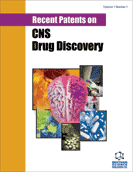Abstract
Genetic mutations that cause specific lysosomal protein deficiencies account for more than 45 Lysosomal Storage Diseases (LSDs), mostly pre-adult disorders which are associated with neurological symptoms and mental retardation. Interestingly, such diseases are often characterized by intracellular deposition and protein aggregation, events also found in age-related neurodegenerative diseases. During the past twenty years, different approaches have been introduced for the treatment of these disorders, several of which are now in routine clinical use or clinical trials. Among them, enzyme replacement therapy (ERT) represented a major progress. However, the usefulness of ERT is limited due to the fact that enzyme distribution is insufficient and treatment costs are very high. A further novel therapeutic option for LSDs is based on the use of small molecules, that can either inhibit a key enzyme which is responsible for substrate synthesis (substrate reduction) or act as a chaperone to increase the residual activity of the lysosomal enzyme (pharmacological chaperones). In addition recently various gene therapy approaches have been developed, mostly based on adeno-associated and lentiviral vectors, and strategies based on stem cells administration are beginning their route. This review provides an update of the status of research on LSDs therapeutic approaches, including recent patents in the field.
Keywords: Lysosomes, lysosomal storage disorders, metabolic cross correction, gene therapy, stem cells, enzyme replacement therapy, substrate reduction therapy, pharmacological chaperone therapy, enzyme delivery, enzyme biodistribution, enzyme targeting, protein phosphorylation, protein glycosylation, mannose 6-phosphate receptors, proteostasis, hereditary, autosomal recessive manner, enzyme activators, homeostasis, autophagosome-lysosome fusion, neurodegenerative diseases, Alzheimer's, Parkinson's diseases, isolation, multisystem disorder, clinical manifestations, central nervous system (CNS), endosomal-lysosomal pathway, sortilin, Golgi, pathogenic mechanisms, metabolic cross-correction, bone marrow transplantation (BMT), orphan drug, Gaucher disease, Fabry disease, mucopolysaccharidoses (MPS), Pompe disease, pharmacological chaperone therapy (PCT), rationale, glucosidase, Chinese Hamster Ovary (CHO), blood-brain barrier (BBB), neurodegeneration, immune-mediated problems, Niemann-Pick disease, neurons, mannose-rich oligosaccharides, phosphorylation of proteins, proteolytic enzyme, thiol-reactive group, Biomarin, sulfatase modifying factor 1, dexamethasone, insulin, carbohydrate, binding receptors, glucocorticosteroid, glucocerebrosidase, glycosylated, solubility, bioavailability, pathology, skeleton, cartilage, heart, lungs, ligand, polymer conjugates, acid-labile, polyethylene glycol, polyvinylpyrrolidone, albumin, dextran, chimeric polypeptides, non-immunoglobulin polypeptide, Affinity, sialylation modification, iduronidase injections, glycosaminoglycan, Plantechno, endosperm, storage vacuoles, acid glucosidase, adeno-associated-virus (AAV), intracranial injections, biosafety, glucuronidase, CSF, AAV-sphingomielinase, polypeptide, anterograde transport, secretory cells, plexus choroids, retinal diseases, replication, homologous recombination events, phosphoglycerate kinase, lysosomal hydrolases, bone marrow transplantation, microglia, arylsulfatase, peripheral nervous systems, mesenchymal stem cells (MSCs), macroporous spherical, polyglycolic acid
 31
31





















